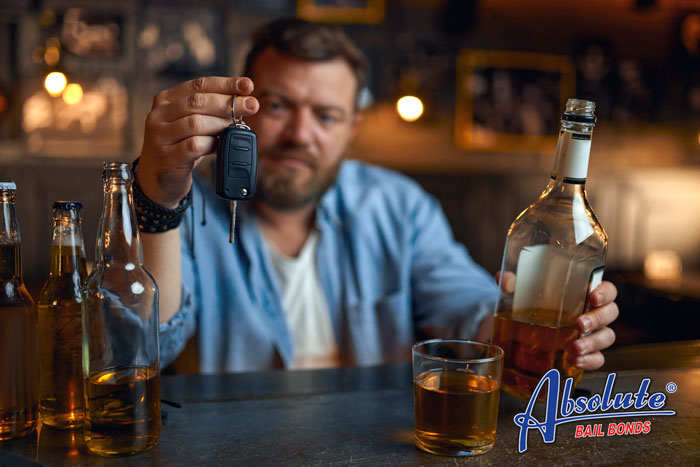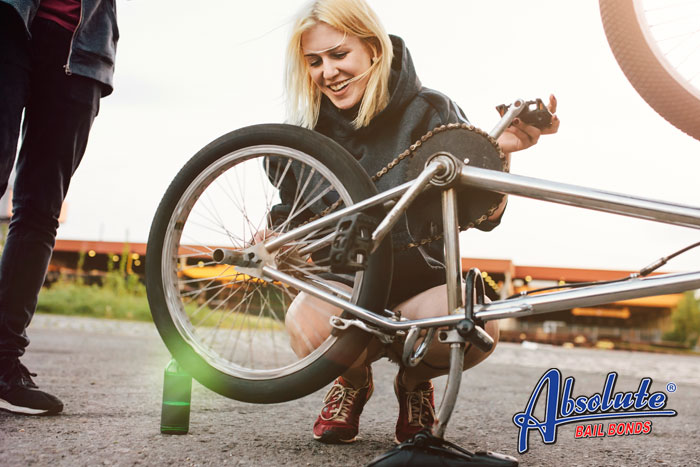
Misusing a Disability Placard in California
Disability placards aren’t something everyone in California can appropriate and use for their own purposes. Getting caught misusing a disability placard in California can land you on the wrong side of the law.
If you think you can misuse a disability placard and not get caught, you should think again. It’s easy for police to spot placard misuse. When they discover someone is misusing the placards, the police are usually quick to take action.
Disability placard misuse is dealt with in Vehicle Code 4461 VC. The law has multiple examples of how disability placards are not to be used. One such example is, “A person shall not lend a certificate of ownership, registration card, license plate, special plate, validation tab, or permit issued to him or her if the person desiring to borrow it would not be entitled to its use, and a person shall not knowingly permit its use by one not entitled to it.”
Other ways a disability placard can be misused include:
- Continuing to use a disability placard that has expired or that has been revoked
- Borrowing someone’s vehicle and using their placard even though you’re not disabled and they aren’t in the vehicle with you.
One could consider California’s Vehicle Code 4461 VC to be one of California’s wobbler laws, but instead of shifting between a felony and a misdemeanor, it could be handled as an infraction or a misdemeanor.
A majority of cases involving the misuse of a disability placard are handled as an infraction. This is good news since there is no jail time, only a fine. That being said the fine can be really steep. The amount can range from $250 to $1,000.
If the case is handled as a misdemeanor, jail will be one of the possible consequences. The maximum sentence is six months in jail and/or a fine that could be as large as $1,000. In some situations, the judge will order misdemeanor probation rather than sending the defendant to jail. It’s also possible that the defendant will have to perform some type of community service and/or seek counseling.
The good news is that you’ll have nothing to worry about provided you are in legal possession of a disability placard and are good about making sure it never expires.

What are Considered Attempted Crimes in California
We’ve all heard stories about people who are charged with attempted crimes such as attempted murder, attempted assault, or attempted burglary. While we’re familiar with the concept of attempted crimes, few of us fully understand how it’s possible to be charged and even convicted, of a crime that didn’t actually happen.
The issue of attempted crimes in California is discussed in Penal Code 664 PC. The law defines attempted crimes as any instance when a person makes a concentrated effort to pull off an actual crime and break the law. The fact that the intent was real, even if the person failed to completely follow through in their attempt to break the law.
The law specifically states that “every person who attempts to commit any crime, but fails, or is prevented or intercepted in its perpetration, shall be punished where no provision is made by law for the punishment of those attempts.”
There are several examples of attempted crimes. These examples include:
- A victim escaping and fleeing from a sexual assault scenario
- Breaking into a house, but being stopped before anything is actually stolen
- A gun backfiring during what would have been a murder
The interesting thing about the way California handles attempted crimes is how the sentencing is handled. The rule of thumb for attempted crimes in California is that the maximum sentence for a guilty conviction will be one-half of the maximum sentence had the accused been able to complete their crime.
Composing a successful attempt for attempted crimes in California generally depends on how much evidence the police have gathered, the type of attempted crime the accused is facing, and how close they came to committing the crime.
Some successful defenses that have been used in the past include:
- That while the accused may have considered the crime, there is no evidence that they would actually carry through with it
- The accused was framed
- The accused didn’t realize that they were about to break the law
Whether the attempted crime is handled as a misdemeanor or a felony depends on how the charges would have been handled had the law actually been broken. This means that there are both misdemeanor and felony attempted crime cases going through the California legal system all the time.
While some maintain that it’s unreasonable to charge and convict people of attempted crimes in California, there is little chance that things will change any time soon. California lawmakers hope that by continuing to pursue attempted crime cases they will:
- Discourage people from breaking the law
- That people realize that there are consequences for actions, even if the actions aren’t fully carried through
The best way to make sure you’re never charged with an attempted crime in California is by never even planning a hypothetical crime.

What Happens if You Hurt Someone in a Drunk Driving Accident?
Driving while drunk isn’t just frowned upon in California, it’s illegal. While you’re allowed to go out and have a good time, if that good time involves drinking alcohol, you need to pay careful attention to how much you consume. As soon as your blood alcohol level reaches 0.08%, you’re no longer legally allowed to drive.
What Happens if You Get Caught Drunk Driving in California?
Don’t assume that just because you’ve never had a drunk driving offense that you have nothing to worry about the first time you’re charged with drunk driving in California. Even though it’s your first offense, it’s still going to have a massive impact on your immediate future.
First the fines. California law is written in such a way that in addition to being required to pay anywhere from $390-$1,000 in fines, you can also pay something that’s called penalty assessments.
Once you’re convicted of first-time drunk driving the judge has the option of sentencing you to jail time. This is in addition to the fines. While there’s no mandatory jail time for a first-time drunk driving conviction, the judge could decide that you need to spend 48 hours to 6 months in jail.
Plan on losing your driving privileges. As soon as you’ve been officially convicted of your first DUI, your license will be suspended for six months. If you refused to submit to a bloc alcohol concentration test, an administrative license suspension could also be enforced which would mean losing your license for a full year.
What Happens if Someone is Injured Because you Were Driving Drunk in California
There’s no way of getting around the fact that if you injure someone while you’re driving drunk, you’ll face far more serious consequences for your actions than if you’re simply pulled over. How severe those additional consequences depends on several different factors including:
- If you have a previous history of DUI
- How severely injured the victim is
- Additional circumstances surrounding the incident
In California, DUIs that involve injuries are treated as wobblers, meaning they can be handled as either a misdemeanor or a felony. If the circumstances surrounding the incident indicate that your case is a felony, you could be sentenced to up to four years in prison and be required to pay a maximum fine of $5,000.
In addition to facing criminal charges, you’ll also likely be named the defendant in a civil case. During the civil case, your victim will seek financial compensation for both their medical expenses and their emotional/physical pain and suffering.
Considering the negative impact a DUI has on your life, it’s in your best interest to always have a designated driver whenever you go out and drink.

Riding Your Bike Under the Influence of Drugs or Alcohol
The rising fuel costs are causing many of us to take a second look at our bikes. Now they not only seem like a pleasant way to stay in shape but also a viable way to ease transportation costs. Not only can you use your bike to get from your home to your workplace, but you can also use it to go out at night. Not paying for gas means you’ll have more money in your pocket for drinks, and since you’re cycling rather than driving you don’t have to worry about watching how much you drink.
California law prohibits you from driving and cycling while under the influence of drugs and alcohol.
California is so serious about making sure that you don’t bike while under the influence that they created an entire law that deals with anyone who is under the influence when they mount their bike.
The law is California Vehicle Code 21200.5 VC and it states that:
“Notwithstanding Section 21200, it is unlawful for any person to ride a bicycle upon a highway while under the influence of an alcoholic beverage or any drug, or under the combined influence of an alcoholic beverage and any drug. Any person arrested for a violation of this section may request to have a chemical test made of the person’s blood, breath, or urine for the purpose of determining the alcoholic or drug content of that person’s blood pursuant to Section 23612, and, if so requested, the arresting officer shall have the test performed.”
The good news is that while the law prohibits you from cycling while under the influence (CUI) the fallout from doing so is nowhere near as life-altering as getting a DUI.
When you’re charged with a CUI you will only face misdemeanor charges. If you’re convicted of CUI in California you won’t spend any time in jail and the maximum fine you’ll face is $250.
While the potential fallout from a CUI isn’t as severe as what you’d get if you were convicted of a DUI, that doesn’t mean you shouldn’t take the situation seriously. The first issue is that you will have a criminal record that shows an alcohol-related offense.
The second thing to consider is that if you’re cycling under the influence and accidentally hurt someone you will face additional legal and civil penalties that could have a long-term negative impact on your life.
While it’s okay to go out and have a good time, when all is said and done, it’s better to have a designated driver than to cycle home after an evening of fun and drinks.

